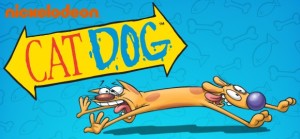According to Kirby Ferguson’s Everything is a Remix, 74 of the 100 top grossing films from 2002-2012 are either sequels, remakes or adaptations. “Perhaps audiences just prefer the familiar (Ferguson part 2).”
As Ferguson showed us, many Disney cartoons are based off Grimm fairy tales and various other sources, but traditional Saturday morning cartoons also caught on to the reiteration of successful shows to keep their audiences coming back for more. Preston Blair, cartoonist for Disney and Hanna-Barbera, showed how to draw character archetypes in many of his how-to books on, most notably Cartoon Animation.



If we examine the some of the characters in the Hanna-Barbera universe, we can see that many characters across shows share many of the same traits, often to convey something about their personalities. In 1969, Hanna-Barbera introduced the world to the crime-solving great dane Scoobert-Doo and the Mystery Machine gang of Fred, the All-American hunk; Daphne, the red-headed vixen; Velma, the bookworm, and Shaggy, the scruffy slacker.

After the success of Scooby-Doo! Where Are You?” Hanna-Barbera premiered a new cartoon in 1977 called Jabberjaw. Notice any similarities?
Many of you may also remember the Hanna-Barbera classic Yogi Bear and his little sidekick Boo-Boo, two pic-a-nic basket thieves who find themselves getting in trouble with Ranger Smith, the park ranger of Jellystone park.
That was in 1961. In ’62, audiences were treated to Wally Gator, an alligator who lives within the confines of the zoo and must be kept in check by zookeeper Mr. Twiddle. Are you noticing a pattern?
While these are examples of in-house copycats, there are plenty of instances through time of animation studios swiping character types from established shows. In 1990, John K. introduces us to Ren and Stimpy, a volatile chihuahua and stupid cat duo, the two always prying at each other’s nerves.

In 1993 with the launch of the Animaniacs, we get Pinky and the Brain, a pair of lab mice, the former a genius, the latter insane.

And then, a few years later, we get CatDog, a … yeah.

Just by looking at these images, without even watching an episode, we can deduce which characters in these pairs are the goofy half of the equation. The off-kilter eyes, hanging tongues and the buck teeth convey the stereotypical dopey look we’ve seen time and again.
With the popularity of Teenage Mutant Ninja Turtles, animators try to jump on the bandwagon of anthropomorphic fighting animals. Case in point: Street Sharks and Samurai Pizza Cats.
With the overnight success of Pokemon, we got arena-battling anime like Digimon
Pokemon http://www.youtube.com/watch?v=NcfdoSuC6MI
Digimon http://www.youtube.com/watch?v=mUihzNN0ees
And then we get to the other half of the equation with the reimaginings. The 1960s The Adventures of Johnny Quest got a ’90s iteration in The Real Adventures of Johnny Quest. Tiny Toons was a spiritual successor to the 1940s Looney Tunes. Muppet Babies were exactly that to the original Muppets. The Rugrats became teenagers in Rugrats: All Grown Up. A Pup Named Scooby-Doo took us back in time with the gang before they were old enough to drive the Mystery Machine. James Bond Jr. And adaptations. Garfield and Friends brought the tabby cat to the small screen after finding success in the funny papers. Street Fighter and X-Men both got their own cartoons in the ’90s. There are so many it would actually take forever to list them all. So, I think this provides a good-enough picture of the highly iterative nature of cartoons.
And, finally, truth-bomb: SpongeBob SquarePants is just Rocko’s Modern Life underwater.






